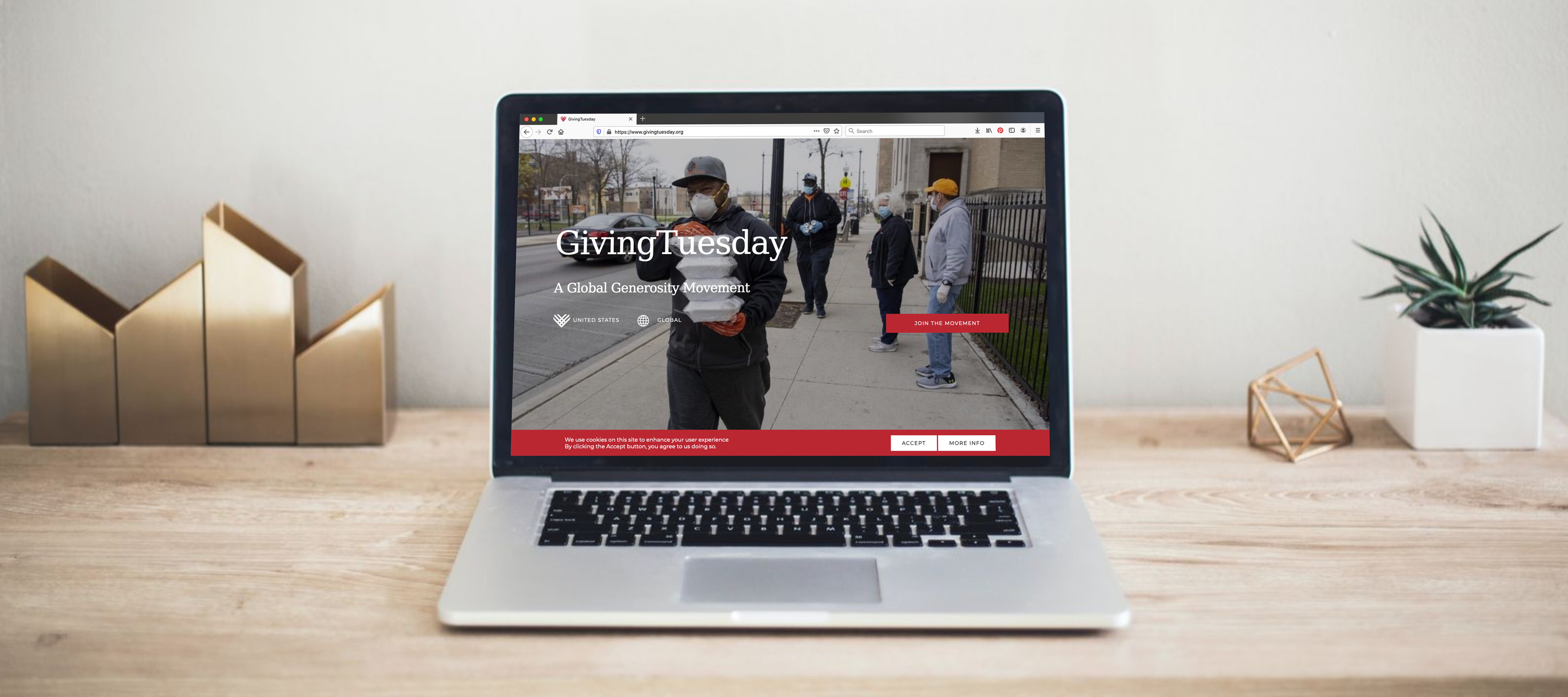
8 Best Practices for GivingTuesday Success

In the midst of what can feel like a pretty grim picture, charitable giving in 2020 stands out as a beacon of optimism. That optimism is somewhat tempered by the fact that some organizations have found 2020 tough going — but at the same time, many in our sector have seen unprecedented levels of philanthropy. They have experienced large increases in new donors, reactivated donors, and renewal rates. And this phenomenon has been especially profound in online giving.
So, as we approach the traditionally strong periods of the year for online giving, what should we expect on GivingTuesday?
GivingTuesday has been growing strongly since its inception in 2012 — most notably in 2019, when $511 M was raised online. Is this newfound comfort with online giving an indicator of a bumper GivingTuesday in 2020? Or will a depressed economy, political uncertainty, social unrest, and the ongoing pandemic discourage giving?
This year has already made a fool out of anyone with the temerity to predict how the year would unfold, so it would be professionally unwise to do so here, even this close to Q4.
Rather than project performance or recommend goal-setting techniques, we’re offering 8 recommendations that, regardless of whether giving is up or down, will help you maximize your digital revenue this GivingTuesday.
- Construct fundraising campaigns at least as intensive as in prior years.
If you’re not in front of your audiences, someone else will be. That truth will be never more important than it is this year. - Focus on communicating authenticity and a clear core case for support.
After 9 months of commercial marketers shoehorning “in these uncertain and unprecedented times, when we’re all in this together…” into every message, your audiences will appreciate an authentic, cliché-free expression of your brand and mission. Check out this on-demand webinar for more ideas about talking to your donors in the age of COVID-19. - Emphasize urgency and impact.
If you can leverage some form of a match, a challenge, or a goal that increases urgency and amplifies donor impact, you should do so. This year, we have heard from countless donors who want to feel like they’re helping in some way. - Avoid overstating need.
Balancing urgency and impact is tricky. Nevertheless, keep your message as genuine as possible without inflating the need that your organization may feel from COVID-19, or the impact that your donors make with their gift. This balance is key to maintain and even build your donor relationships. - Highlight loyalty in a competitive landscape.
To point #1, your donors were giving to multiple organizations prior to COVID-19. Now they’re likely supporting even more nonprofits. All of them will be asking for money on GivingTuesday. So, in the run-up to GivingTuesday, take time to acknowledge your donors’ loyalty and thank them for their support. - Don’t skip your explanation of what GivingTuesday is.
Don’t assume the spike in new donors your organization may have seen during the crisis means these new audiences associate you with GivingTuesday. They may not have heard from you on prior GivingTuesdays and therefore may not be accustomed to thinking of you at that time. (In fact, according to the Chronicle of Philanthropy, in 2019, 55% of young adults had never heard of GivingTuesday!) So, make sure your new-to-file donors receive “Save the Date” communications well ahead of GivingTuesday to help them connect your mission to their intentions on this important giving day. - Leverage those new digital habits.
Now that your audiences are as fluent with digital tools and as engaged with virtual communities than ever, make sure you’re providing them with as many online opportunities as possible to engage with and support your organization. If your GivingTuesday campaigns have been limited to email, website, Google grant, and social ad components in prior years, why not consider testing a new tactic or channel this year? GivingTuesday Facebook fundraisers tend to perform very well, as do paid search and website visitor retargeting. - Working smarter is self-care.
Fundraisers, especially digital fundraisers, are on the verge of the burnout phase in 2020, if not past it. Facing the “busy season” after the year we’ve had is intimidating. So rather than dipping deeper into your near-empty tank, why not find ways to make your GivingTuesday campaigns simpler? Schedule emails and social posts that you might have launched manually. Leverage email resends with lift notes and save on copywriting and coding. Add copy that acknowledges and thanks people who may have already given to an earlier email and avoid the need for multiple segmentations and suppressions.
Above all, keep on keeping on. You may be tired of hearing this phrase, but your work as a fundraiser really has never been more important!
